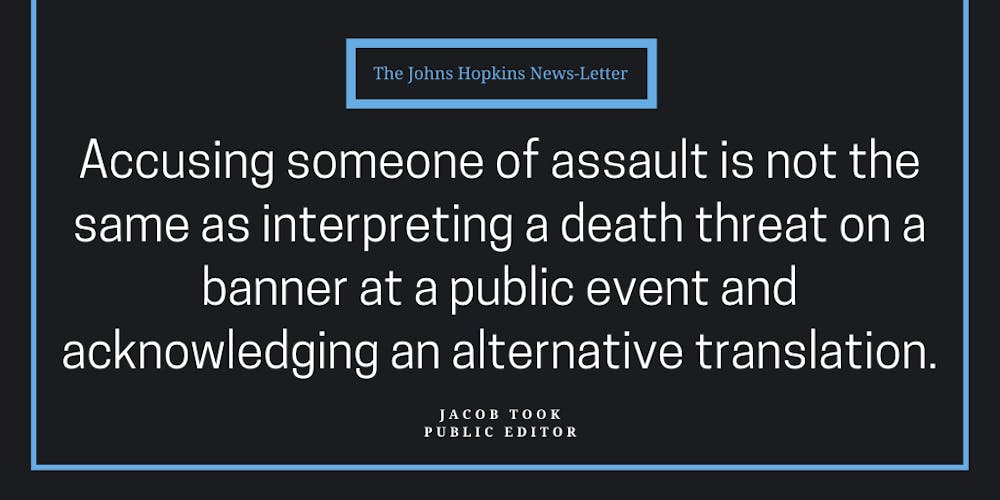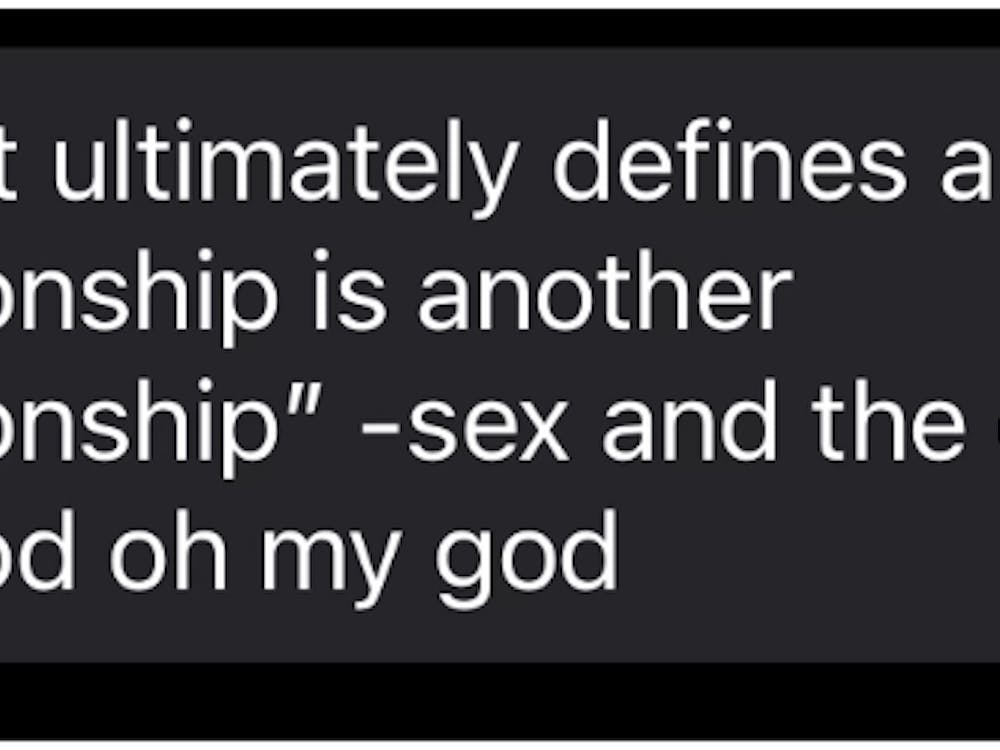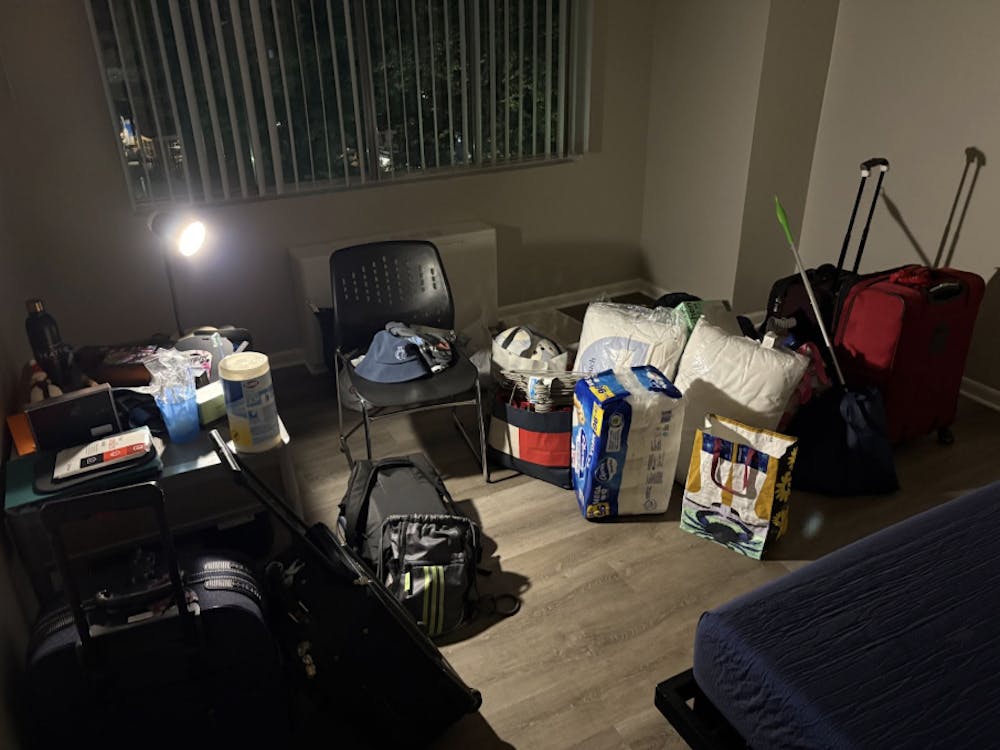
Readers have recently seen some of the paper’s first coverage of the protests in Hong Kong, a clash between demonstrators and state forces over China’s executive authority in the city. Though these protests having been happening since last June, they didn’t reach Homewood Campus until Joshua Wong and Nathan Law, two activist leaders of the Hong Kong movement, spoke at Shriver Hall on an invitation from the Foreign Affairs Symposium (FAS).
A contingent of (mostly) Chinese students circulated an unsuccessful petition calling on FAS to cancel the event. About 100 of those students rallied outside before Wong and Law spoke, drawing counter-protests supporting Wong and Law’s freedoms of speech.
News & Features coverage in “Hong Kong activists spark controversy” surveys the complicated conversation, one in which Hopkins students on all sides have a personal stake.
An ‘Opposing Viewpoints’ feature in last week’s Opinions section built on this conversation, examining the question of free speech through the lens of the Hong Kong protests. In an Opposing Viewpoints setup, writers take different stances on an issue, appearing side-by-side on the page to bring contrasting perspectives into discussion.
Opinions Editor Ariella Shua told me that she had stopped by to see the protests for herself when a reader suggested responding to the protests at FAS through Opposing Viewpoints. She explained how this form expanded on the previous week’s news coverage.
“Opinions are inherently more emotional,” she explained. “There were protests on campus here, but it’s tied to stuff happening across the world. Both writers were writing from their Hopkins perspectives, and then from their perspectives on what’s going on in China and Hong Kong.”
This was Shua’s fourth time curating an Opposing Viewpoints. Her writers have also debated whether joining Greek Life is worth it, whether SGA’s student group policies helped or hurt students and whether U.S. President Donald Trump should be impeached.
These pieces are a great way to engage readers in a complex dialogue about important issues, but I asked Shua if she had concerns about flattening out discussion by giving equal weight to two polarized sides.
“Opposing Viewpoints are always split exactly 50/50. The word counts are supposed to be around the same limit, and on the page it’s split right down the middle. That can possibly skew the issue.” That being said, she went on to add, “The point of Opposing Viewpoints is that you do consider points of view you haven’t really considered before.”
She joked that some people only read one piece and not the other. Despite their side-by-side arrangement in print, it may be less clear to readers online that they should read both pieces together. Why not preface each with an editor’s note introducing the issue and linking to each corresponding counter-argument?
Controversial opinions on complicated stories typically draw the sharpest response in The News-Letter’s Facebook comments, but some readers disagreed with a few lines in “The Hong Kong protests are not pro-democracy” accusing a counter-protester supporting the Hong Kong movement of assaulting one Chinese student and harassing another after leaving the event.
The strong language characterizing the pro-Hong Kong protesters does stand out. According to Shua, the writers provided screenshots of text messages which reflected hostility toward Chinese students on campus. These messages, while not alluding specifically to an instance of assault following the FAS event, led Shua to conclude that the claims these writers made were at least rooted in truth.
She emphasized that, as an editor, she challenges aspects of a piece to make the overall argument stronger while trying to preserve the intent and preferred language of the writers. This process includes a rigorous back-and-forth in which she thoroughly examines each part of the piece.
“It’s extremely well-documented because I know people, in Opinions especially, want to make sure exactly what they said is exactly what’s there,” she said. “When I’m seeing them for the first, second, third time, I definitely go through all the pieces with a lot of suggestions.”
She, too, flagged the description of assault, but screenshots provided by the writers appeased not only Shua but also the Editors-in-Chief. While they certainly reflect harassment against Chinese students, use of a loaded term like “assault” here deserves double scrutiny, given that evidence of targeted remarks and hostile sentiment is not necessarily evidence of assault.
Without support from concrete evidence, either from The News-Letter’s reporting or a verified source, terms like “assault” should have been edited out of the piece. But standards of fact-checking should be applied evenly across the section and the entire paper.
Take the pro-Hong Kong argument, “The need for free speech from Hong Kong activists,” which refers to a disagreement between the writer and a Chinese student about whether a banner included a death threat to people from Hong Kong (written in Chinese, the banner’s translation was up for debate).
The News-Letter should have verified this too, and Shua did obtain a picture of the banner. Fact-checkers could have taken pictures of the banner to a trusted Chinese speaker to verify there was at least reason to question the translation.
In this case, though, the trusted Chinese speaker was the writer. Editors trust writers to be honest about their personal experiences, feelings and opinions. In return, writers trust editors to read with care and stand by the printed words.
Which brings us to the crux of the distinction here: the word “assault” is significant to the reader’s eye. Accusing someone of assault is not the same as interpreting a death threat on a banner at a public event and acknowledging an alternative translation.
The paper doesn’t have the kind of formal, thorough fact-checking operation that would typically vet every piece at a professional publication. Reporters, writers and editors are typically expected to confirm accuracy for themselves.
After it’s on the page and out of the editor’s hands, a piece is only fact-checked by the Copy staff, but they mostly check spelling, dates and other easily-confirmed or corrected pieces of information. Don’t get me wrong, I was a Copy reader — the Copy Editors and their readers are critical, but they are doing a lot already and lack the muscle required to lift the paper’s standards of fact-checking thoroughness.
When it comes to opinion pieces, the guide for Copy staff encourages changing as little as possible. As Shua indicated, op-ed writers work hard to make sure their pieces express exactly what they want to say. The last thing Copy staff want to do is change a writer’s perspective because of a quibble over a few words.
The issue with last week’s piece, though, goes beyond a quibble. Claims about assault must be underpinned by reliable reporting before appearing in the paper — a police record, camera footage, an Instagram live stream. If the writers had even provided text messages that made specific reference to these incidents, the case might at least have been stronger.
Editors value fact-checking because it shows readers that the paper cares about creating a healthy dialogue, something Shua clearly takes seriously in her role. If a reader disagrees with a statement that’s been verified, then they simply hold a different opinion. If a reader disagrees with an unverified claim, however, they might reasonably lose trust in the paper’s accuracy going forward.
We want you to be part of this conversation! We encourage our readers to email publiceditor@jhunewsletter.com with questions or comments about our practices and published content.





